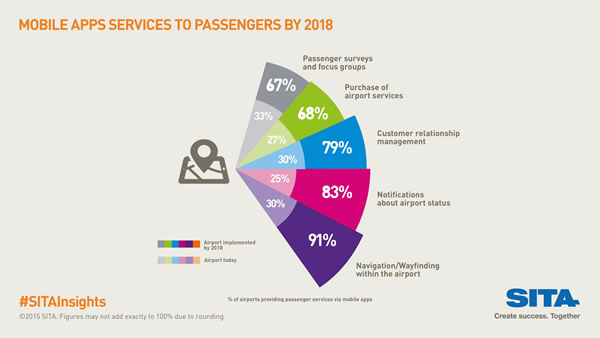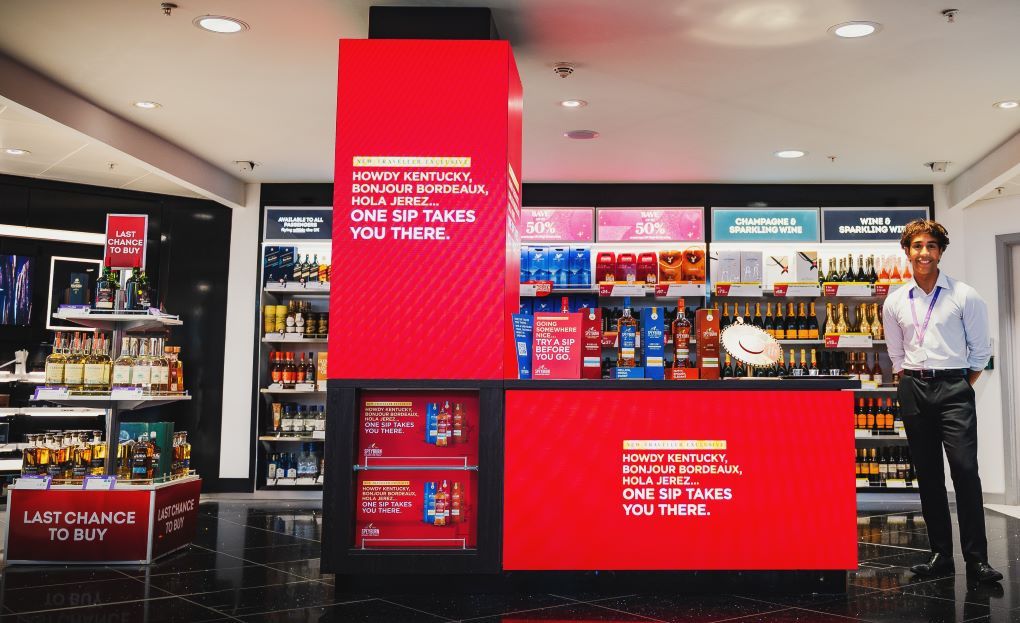 |
“57% of airports plan to offer retail promotions through their app, while 41% will introduce convenient purchasing of airport services.“ |
Matthys Serfontein Vice President Airports SITA |
Today’s passengers demand more control over their airport journey and this is shaping how airports will interact with them in future, writes SITA Vice President Airports Matthys Serfontein.
The modern passenger wants to spend as little time getting from the kerb to the gate. They want to eliminate the stress of check-in, immigration and security and have more time to enjoy the services, lounges and retail that await them. They are also demanding personalised airport information be put at their fingertips – be it updates on flight delays, gate changes or baggage collection.
For airports, providing a personalised journey means giving passengers the information they want at the right time. Airports must allow passengers to choose the most relevant information. A passenger who is late getting to the gate will not be interested where the nearest coffee shop is located. However, they would value directions that will get them to the gate quickly.
Technology is central to meeting these demands and innovative services that leverage mobile, beacon and other proximity technologies are leading the charge.
The 2015 Airport IT Trends Survey, shows that mobile, above all, is becoming the favoured platform, and holds great promise to improve the passenger experience by giving passengers a smooth flow, end-to-end, through the travel steps. The on-the-go capability of mobile devices means it is at the airport where they can make a real difference.
The survey shows that by 2018, 80% of airports will use beacons to provide way-finding services and 74% to provide notifications to passengers. These small devices allow airports, in conjunction with mobile apps, to identify where passengers are in their journey and deliver real-time “˜day of travel‘, personalised information to them at the appropriate point in their journey.
 |
By 2018, most airports will use beacons to provide way-finding services and notifications to passengers, says SITA |
However, it is not just “˜day of travel’ services that airports can offer their passengers but also commercial information. For example, 57% of airports plan to offer retail promotions through their app, while 41% will introduce convenient purchasing of airport services, such as car parking and lounge access. 42% of airports will support these efforts by making cashless payments available with their app. It all leads towards the same end-goal: facilitating the best, most efficient passenger journey through the airport.
An airport’s ability to harness the power of data is critical to its ability to make the most of modern technology trends. Capturing data from sensor technologies to drive real-time business intelligence and analytics is a must. Airports can now use Business Intelligence tools to monitor passenger flow, and deploy staff and assets more effectively, including the ability to use aircraft movement data.
Therefore it comes as little surprise that by 2018 more than half of airports will have sensors in use at various points of the journey including check-in, bag drop, security, dwell time and boarding. Over the next three years, 55% of airports plan business intelligence initiatives using passenger flow data and 43% from monitoring airport resources and assets.
SITA is the world’s leading air transport IT and communications specialist. Airlines, airports, aircraft, ground handlers, governments, air cargo, aerospace, air navigation service providers and international organizations all use SITA information and communication technology (ICT) solutions, relying on the organisation’s expertise to keep the wheels of the industry in motion. Owned by the industry, SITA is guided by over 430 owner-members around the world. It is steered by the expertise and experience of the SITA Board and SITA Council, comprising over 45 air transport industry CIOs and other IT professionals. See: www.sita.aero/ | ||
This ties in with where airports see the big wins from investing in business intelligence. A good majority (68%) of airports expect the most business value to derive from more effective tracking of assets and staff, while 49% of airports see high value from using business intelligence to speed up passenger processing and increase dwell time so that retail revenues can be maximised.
And more innovation is likely to be introduced in the near future, with wearable devices likely to appear at airports over the next three years.
One example of wearable tech is the Smartwatch, which can play a dual role at airports. On the wrists of airport staff, they can relay information back and forth from operations to complement the sensor technology deployed in airports.
On the wrists of passengers, they can receive real-time information and make it easier for passengers to move through the airport. A smartwatch requires just a quick flick of the wrist for the passenger to have all the relevant information needed to board a flight.
Near field communications (NFC) is also an emerging technology and well suited for use on new smartphones. It allows communications between the phone and a NFC reader or another NFC phone to transfer information.
Because it is secure, NFC is seen as an opportunity for everything from electronic wallets, where money can be stored and transferred, to credit card information. It can even replace the traditional card swipe for payment.
 |
“An airport’s ability to harness the power of data is critical to its ability to make the most of modern technology trends.“ |
Matthys Serfontein Vice President Airports SITA |
It is clear that these technologies help deliver more efficient operations. But an equally important benefit is an enhanced passenger experience. The use of these technologies eliminates stress and improves the emotional state of passengers.
The 2015 Airport IT Trends Survey for the first time linked the emotional state of passengers at various stages along the airport journey and the associated use of technology.
The survey showed that passengers widely associated positive emotions with the early steps in the journey where technology usage by passengers is a well-established and expected part of the experience.
In particular 91% of passengers rated the booking stage as a positive experience with only 9% having a negative experience. Check-in is also rated as a positive experience by the vast majority of passengers (86%) and delving deeper it is clear more passengers had a positive experience when they used self-service than when they used an airport check-in desk.
The results tend to support the view that technology puts the passenger in control of their journey and therefore, has a positive effect on the travel experience for most passengers, which in turn will reinforce its acceptance and adoption.
Clearly it is going to take time for the industry to adopt the full spectrum of these modern technologies and queues are not going to disappear overnight. But the good news is that almost every major technology trend at airports is aimed at optimising efficiency for passengers and these investments are starting to pay dividends.
 |
“Mobile, above all, is becoming the favoured platform,” says SITA |








